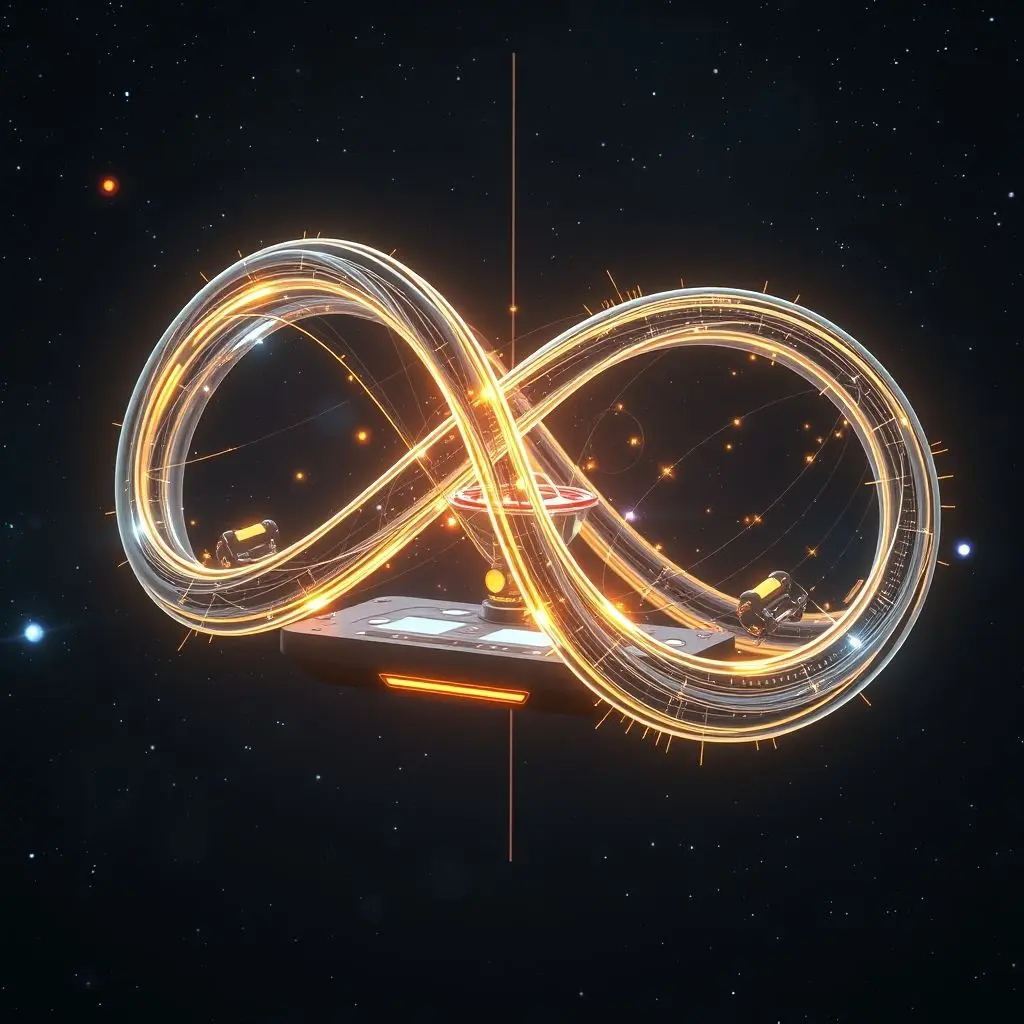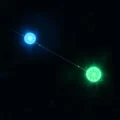Imagine the headline: “Confirmed! Life Exists on Exoplanet Kepler-186f!”. A wave of excitement, awe, and profound questions washes over humanity. But beyond the initial discovery, the most complex and fascinating challenge looms: how do we actually communicate with them?
The science fiction scenario suddenly becomes a very real, incredibly difficult engineering and philosophical problem. We’ve found the cosmic address; now we need to figure out how to send and receive mail across a gulf measured in light-years.
Before we dive deep into the technological hurdles, take a quick trip with us to visualize the core challenge:
As that short clip highlights, simply knowing life is out there is just the first step. The tech needed for meaningful interaction isn’t sitting in a lab somewhere; much of it feels like it belongs in the realm of imagination. So, what are the key tech hurdles?
Table of Contents
Listening for Echoes Across the Void: Detecting Their Signals
Our primary tool for interstellar communication, whether sending or receiving, has historically been radio waves. Projects like SETI (Search for Extraterrestrial Intelligence) have spent decades scanning the skies, primarily using radio telescopes like the Arecibo Observatory (before its collapse) or the Green Bank Telescope, listening for non-natural patterns. They focus on frequencies considered likely ‘watering holes’ – parts of the radio spectrum where noise is minimal and fundamental frequencies like the hydrogen line (1420 MHz) might be used universally.

But what if they aren’t using radio? Advanced civilizations might use powerful lasers (optical communication), neutrinos, or even gravitational waves. Detecting these requires entirely different, often more sensitive, and still developing technologies. The sheer vastness of possible frequencies and signal types makes finding the needle in the cosmic haystack incredibly difficult. We’re essentially guessing what technology they might use and hoping we’re looking in the right place with the right instruments, all while filtering out Earth-based interference and natural cosmic static.
The Tyranny of Distance: Light Speed Delays
Even if we detect a signal or send one ourselves, the speed of light, while fast from our perspective, is agonizingly slow across interstellar distances. The nearest star system, Alpha Centauri, is about 4.37 light-years away. A radio message sent there would take 4.37 years to arrive, and any reply would take another 4.37 years to return. That’s almost a nine-year round trip for a single exchange.

An inhabited exoplanet found dozens, hundreds, or even thousands of light-years away presents a delay that quickly stretches into lifetimes, centuries, or millennia. A single ‘hello’ and their ‘hello back’ could take longer than the entire span of recorded human history! This isn’t a real-time chat; it’s more like sending a message in a bottle across a vast, slow-moving ocean of spacetime. Any communication would have to be extremely compressed, information-rich, and carefully considered, knowing that by the time a response arrives, our civilization might have changed drastically, or perhaps even ceased to exist. The tech challenge here isn’t speeding up light (physically impossible as far as we know), but managing and encoding information for such immense, slow exchanges.
Bridging the Alien Mind Gap: Language and Concepts
Assuming we detect a signal and can potentially send one back, how do we establish a shared language? This isn’t just about translating words. It’s about understanding an entirely alien cognitive framework, their perception of reality, their physics, mathematics, and culture – or lack thereof, from our perspective.

Early attempts at interstellar messages, like the Arecibo message, used fundamental concepts like prime numbers, basic arithmetic, and depictions of human form and our solar system, hoping these might be universal concepts. But even seemingly universal ideas might be perceived or represented differently. Developing a system of communication – a cosmic Rosetta Stone – would be an enormous undertaking, likely starting with mathematics and physics as potential common ground, and slowly building complexity. The tech required here isn’t just hardware; it’s sophisticated data analysis, pattern recognition algorithms, and perhaps even AI capable of deciphering complex alien information structures.
Establishing Cosmic Etiquette: First Contact Protocols
Who speaks for Earth? What do we say? These aren’t strictly technological questions, but they are intertwined with the tech challenge. If we detect a signal, do we reply immediately? The international scientific community, through bodies like COSPAR (Committee on Space Research) and institutions involved in SETI, has considered non-binding “Post-Detection Protocols.” These generally suggest confirming the signal’s extraterrestrial origin, informing the global community, and refraining from transmitting a reply until international consultation has occurred.
But agreeing on a message and a messenger would be a monumental diplomatic challenge involving complex technologies for secure, global communication and data sharing among potentially competing interests. The tech infrastructure for global consensus and message formulation itself is part of this puzzle.
Pushing the Boundaries: Beyond Conventional Tech
Given the limitations of current technology – particularly the light-speed barrier – are there other possibilities? This is where speculation borders on the edge of known physics and, as Arthur C. Clarke famously put it, ventures into territory indistinguishable from magic.
- Quantum Communication: Could entangled particles be used to transmit information instantaneously? Current understanding suggests this is only possible for quantum states, not classical information for communication, and entanglement breaks down over distance. But future breakthroughs? Maybe.
- Spacetime Manipulation: Concepts like ‘warp drives’ or ‘wormholes’ from science fiction propose manipulating spacetime to travel or send information faster than light. These remain highly theoretical, requiring technologies that are currently science fiction, relying on exotic matter or energy densities we don’t know how to create or control.
- Neutrino Communication: Neutrinos interact very weakly with matter, allowing them to pass through planets. Could they be used for communication? The challenge is generating and detecting them in sufficient numbers to carry meaningful information over vast distances – requiring massive, power-hungry accelerators and detectors.

These advanced concepts highlight that interstellar communication with inhabited exoplanets, if it goes beyond one-way detection or multi-century exchanges, might require physics and engineering far beyond our current grasp. It demands serious tech wizardry, indeed.
Frequently Asked Questions About Exoplanet Communication
Q: What is the Drake Equation?
A: The Drake Equation is a probabilistic argument used to estimate the number of active, communicative extraterrestrial civilizations in the Milky Way galaxy. It multiplies several factors, including the rate of star formation, the fraction of stars with planets, the fraction of planets that could support life, and the fraction of civilizations that develop technology detectable from space. It’s a way to frame the factors involved in the search for ET, but many of its terms are highly speculative.
Q: Has SETI ever detected a confirmed alien signal?
A: No, not a confirmed, verifiable signal from an extraterrestrial civilization. There have been intriguing candidate signals over the years, like the “Wow!” signal in 1977, but none have been repeated or confirmed in a way that points definitively to intelligent alien origin. SETI continues its passive listening efforts.
Q: If we detect a signal, what should our first message be?
A: This is one of the most debated questions! Some argue for a message of peace and introduction, perhaps using universal language elements like math or science. Others argue we should remain silent after detection, fearing potential risks. There is no global consensus, reflecting the profound implications of such a moment.
Q: Is quantum entanglement useful for faster-than-light communication?
A: Based on our current understanding of physics, no. While measuring one entangled particle instantaneously affects the state of the other, this correlation cannot be used to transmit classical information (like a message) faster than the speed of light. It’s useful for quantum computing and cryptography, but not FTL communication in the way needed for interstellar chat.
Looking Towards the Cosmic Horizon
Finding an inhabited exoplanet would be the dawn of a new era. The subsequent challenge of communication is not merely a matter of building bigger dishes; it’s a call to innovate at the very edge of what we understand about physics, information, and consciousness. It might push us towards breakthroughs in quantum science, data theory, or even entirely new paradigms of technology we can only dimly perceive today. Until that cosmic ringtone sounds, we continue to listen, build, and dream of the unimaginable tech that might one day let us whisper across the stars.





